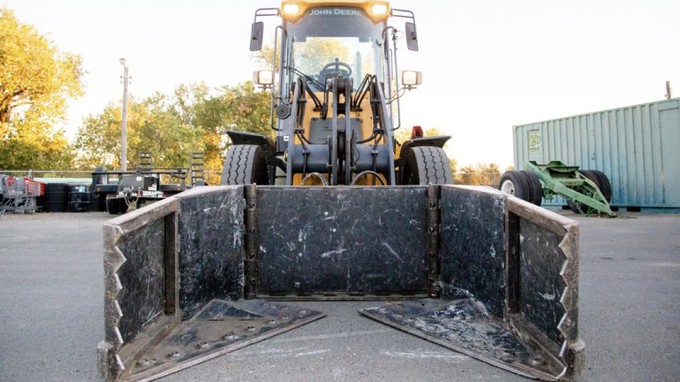
In-street pick-up service wraps up for another winter

Sacramento city residents have until Monday, Jan. 29, to put leaves and other yard waste out for the Claw to pick up. Check neighborhood schedules. Courtesy City of Sacramento
Got pruning? You better hurry up if you want in-street pick-up. The Claw’s days are officially numbered for this season.
Sacramento residents who want to put their green waste in the street for pick-up have until Monday, Jan. 29, to do so. That’s the last day before the city’s fleet of Claws – Sacramento’s specialized articulated tractors – call it a season and go back to the heavy equipment barn.
For three months each year, the Claws scoop up leaf piles and other debris from city streets. It’s a unique service that residents in the City of Trees treasure as a legacy.
On average, the Claw visits each neighborhood about seven times during leaf season, which started Nov. 1.
Residents can find out when the Claw will be in their neighborhood with the Claw calendar, available on Sacramento’s official Leaf Season webpage, www.SacLeafSmart.org. Just put in your street address and the online calendar will tell you when to expect the Claw in your neighborhood.
In all, the Claw crews expect to pick up about 20,000 tons of green waste this season. Besides leaves, branches and other pruning debris are also accepted. (No tree stumps allowed.)
Although organic food waste (along with leaves and yard debris) now goes in the green-waste container, don’t dump food waste or paper into leaf piles. The Claw won’t pick them up. Instead, put such organic waste in the green-waste container.
In fact, city officials prefer that residents put as much as they can into the green-waste container before putting piles in the street.
Here are more tips:
* Leaf piles can be no bigger than 4 by 4 by 9 feet (and just one per household). Make sure there is space between the pile and the curb so water can flow down the gutter.
* Place the pile at least 6 feet away from cars, boats, basketball hoops or other obstructions. The Claw needs room to maneuver. Don’t block bike lanes.
* Don’t put plastic bags in street piles (including bags full of leaves or debris).
* And don’t contaminate the leaf pile with trash or dog poop (a common problem).
After leaf season, Sacramento residents can still arrange for special in-street pick-up of large items such as chopped-up tree limbs – as well as old appliances and furniture. From February to October, residents can get two free “Household Junk Pick-up” appointments simply by calling “311.” (Remember: Don’t put items in the street until after your pick-up is confirmed.)
For more information: SacLeafSmart.org.
Comments
0 comments have been posted.Sacramento Digs Gardening to your inbox.
Sites We Like
Garden Checklist for week of July 21
Your garden needs you!
* Keep your vegetable garden watered, mulched and weeded. Water before 8 a.m. to reduce the chance of fungal infection and to conserve moisture.
* Feed vegetable plants bone meal, rock phosphate or other fertilizers high in phosphate to stimulate more blooms and fruiting. (But wait until daily high temperatures drop out of the 100s.)
* Don’t let tomatoes wilt or dry out completely. Give tomatoes a deep watering two to three times a week.
* Harvest vegetables promptly to encourage plants to produce more. Squash especially tends to grow rapidly in hot weather. Keep an eye on zucchini.
* Pinch back chrysanthemums for bushy plants and more flowers in September.
* Remove spent flowers from roses, daylilies and other bloomers as they finish flowering.
* Pinch off blooms from basil so the plant will grow more leaves.
* Cut back lavender after flowering to promote a second bloom.
* It's not too late to add a splash of color. Plant petunias, snapdragons, zinnias and marigolds.
* From seed, plant corn, pumpkins, radishes, winter squash and sunflowers.